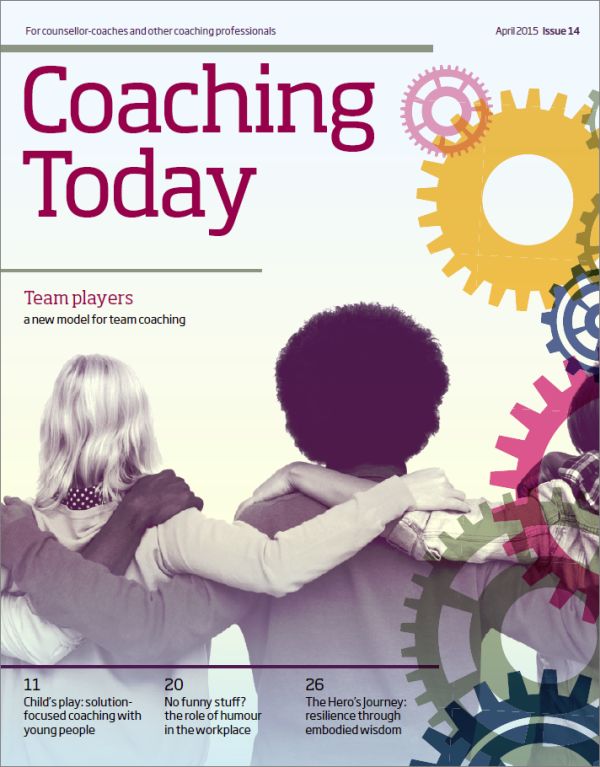In this issue
Features
There’s no ‘I’ in team: the dynamics of team coaching
Nick Wright
Brief coaching with children and young people: a solution-focused approach (free article)
Denise Yusuf
Diving deep, reaching high: how to develop yourself as a supervisor
Sarah Corrie and Jo Birch
All work and no play?
Dr Sandi Mann
Promoting your coaching practice
Ruth Clowes
Wild adventures: a personal reflection on uncertainty and change
Francis Briers
Regulars

A pdf of this issue is available in the Coaching Today archive
Editorial
It’s been a while since I was in full-time employment in an organisation and, even though that was the context in which I started my coaching training, most of my private practice since then has been with individuals. However, those of us who are working in an organisational context are more likely to find ourselves coaching and facilitating entire teams and working with the group dynamics that ensue. When working with a team, rather than simply explored and worked through from an individual’s point of view, the relationship dynamics are actually alive and present in the room, playing out within the group, and change can happen immediately, in the moment
For our cover feature in this issue, leadership coach Nick Wright offers his personal perspective on the transition from individual to team coach and describes the development of his own model for working specifically with teams in organisations. As he explains, the beauty of working with teams is that it provides the ideal opportunity to work on actual interactions that arise in the moment and so enables the individual members of the team to work together to understand and improve on them. His model encourages team members to think about and reflect on their individual performance and how they work together as a whole, as part of a bigger system.
Staying with the organisational theme, leadership coach and consultant Francis Briers reflects on his own particular transition and examines the concept of the ‘Hero’s Journey’, applying it to his work with clients in organisations and to his own particular circumstances. As an embodiment coach and trainer, Francis also draws on the wisdom of the body to help clients access and understand their personal triggers and so develop resilience in the face of change and uncertainty. Occupational psychology lecturer Dr Sandi Mann identifies a readily available resource to support employees' resilience. She challenges the assumption that humour has no place in the workplace and makes the case for embracing playfulness at work – something worth thinking about for those of us working in organisations as coaches, trainers and consultants.
It’s also worth remembering that organisations come in all shapes and sizes and our clients may not always be leaders, managers or employees. Those of us who work in education and community settings may increasingly find ourselves working with younger people. When we ran our online readers’ survey last year, a number of you reported that you would like more features about coaching children and young people. I am very happy to welcome Denise Yusuf, author of a new book on Brief Coaching for Children and Young People (to be published in 2015 by Routledge), who here contributes her thoughts on why solution-focused coaching is so effective for this particular population.
Finally, on the subject of journeys, Sarah Corrie and Jo Birch conclude their three-part series on supervision for coach-therapist practitioners by inviting you, the reader, to explore the subject of supervision from the supervisor’s perspective. Are you already a supervisor looking to develop your skills in this area? As Sarah and Jo acknowledge, the dual-trained practitioner is an emerging identity that requires support in specific areas of supervision, training and development, and for those considering or already working with coach-counsellors and/or therapists, this aspect of the supervision relationship is ripe for exploration and investigation. I hope you will agree that this series has provided much food for thought for practitioners and supervisors alike and their final instalment does not disappoint.
As with all of our features, please let us know what you think. Your feedback on our journal is invaluable and helps shape the content and future direction. You can write to me at the email address below with any comments, feedback, or ideas for features; your input is always welcome.
Diane Parker
Editor
editorial@bacpcoaching.co.uk
